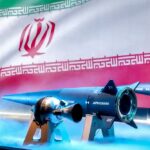Navigating airport security can be stressful, especially when it comes to understanding the Transportation Security Administration’s (TSA) rules regarding liquids. Knowing exactly “What Size Travel Bottles Are Allowed On Airplanes” is crucial for a smooth and hassle-free travel experience. This guide provides a detailed breakdown of the TSA’s 3-1-1 liquids rule and its exceptions, ensuring you’re well-prepared for your next flight.
Understanding the TSA 3-1-1 Liquids Rule
The cornerstone of the TSA’s liquids policy is the 3-1-1 rule. This regulation dictates how much liquid you can carry in your carry-on baggage. Here’s a breakdown:
- 3.4 ounces (100 milliliters): Liquids must be in travel-sized containers that are no larger than 3.4 ounces or 100 milliliters.
- 1 quart-sized bag: All liquid containers must fit comfortably in one clear, quart-sized, resealable bag.
- 1 bag per passenger: Each passenger is limited to one quart-sized bag of liquids.
This rule applies to most liquids, gels, aerosols, creams, and pastes. However, certain exceptions exist for medically necessary items, baby-related products, and other specific situations.
Exceptions to the 3-1-1 Rule
While the 3-1-1 rule is generally strict, the TSA makes exceptions for certain items deemed medically necessary or essential for specific travelers.
Liquid Medications and Contact Lens Solution
Prescription liquid medications are exempt from the 3.4-ounce limit. You can bring larger amounts of medically necessary liquids, gels, and aerosols in reasonable quantities for your trip. However, it’s crucial to declare these items to security officers at the checkpoint. Non-prescription liquid medications and contact lens solutions are generally limited to 3.4 ounces, unless deemed medically necessary and declared to the TSA.
If you want to ensure that your medication isn’t opened or X-rayed, inform the TSA officer. They will take additional steps to clear the liquid, which may include additional screening procedures for you and your carry-on property, such as AIT screening or a pat-down.
Breast Milk and Infant Formula
Passengers traveling with infants are allowed to bring breast milk and baby formula in quantities exceeding 3.4 ounces. These are categorized as “medically necessary liquids,” and the child doesn’t need to be present for the exception. The TSA suggests transporting these liquids in clear, translucent bottles for easier screening. While you may be asked to open them, the agency assures that nothing will be placed in the liquid. Alternative testing methods are available if you prefer that the liquids not be X-rayed.
Baby and Toddler Food and Drinks
Besides breast milk and formula, food and drinks for babies and toddlers, including puree pouches, are also permitted and fall under the “medically necessary” category. Water for babies is allowed in “reasonable quantities” as well.
Liquid Teethers
Liquid-filled teethers are explicitly mentioned by the TSA as items that can be brought through security checkpoints.
Ice, Gel, and Freezer Packs
Ice, gel, and freezer packs required to keep medically necessary items cool are also exceptions, regardless of their state (solid ice or liquid gel). However, frozen and slushy items may be subject to additional inspections. IV bags, pumps, syringes, and other medical supply accessories are also allowed.
Other Notable Exceptions
Beyond medical and baby-related items, the TSA makes exceptions for a few other specific scenarios:
- Fresh Eggs: Despite having liquid yolks, fresh eggs can be taken through TSA security but may need to be separated for inspection.
- Live Fish and Coral in Water: Live fish and coral in water are allowed in clear, transparent containers, subject to inspection.
- Biological Specimens: Non-infectious specimens in preservative solutions for scientific research can be carried under specific packaging guidelines.
- Non-Spillable Wet Batteries: Certain portable electronic devices may contain non-spillable wet batteries that are allowed, provided they meet specific voltage and watt-hour requirements.
- Duty-Free Purchased Items: Liquids purchased at airport duty-free shops or on board an aircraft can be taken home as long as they are sealed in a security tamper-evident bag (STEB).
Tips for a Smooth Security Screening
To ensure a seamless experience at the security checkpoint when traveling with liquids:
- Know the Rules: Familiarize yourself with the TSA’s 3-1-1 rule and any exceptions that apply to your situation.
- Declare Exempt Items: Inform the TSA officer about any medically necessary liquids or other exempt items you are carrying.
- Pack Smart: Place all liquids in a clear, quart-sized bag for easy inspection.
- Arrive Early: Give yourself ample time to go through security, especially if you anticipate additional screening due to liquids.
- Be Prepared to Answer Questions: TSA officers may ask questions about the liquids you are carrying, so be prepared to provide clear and concise answers.
By understanding the TSA’s regulations on “what size travel bottles are allowed on airplanes” and following these tips, you can navigate airport security with confidence and enjoy a stress-free travel experience.
